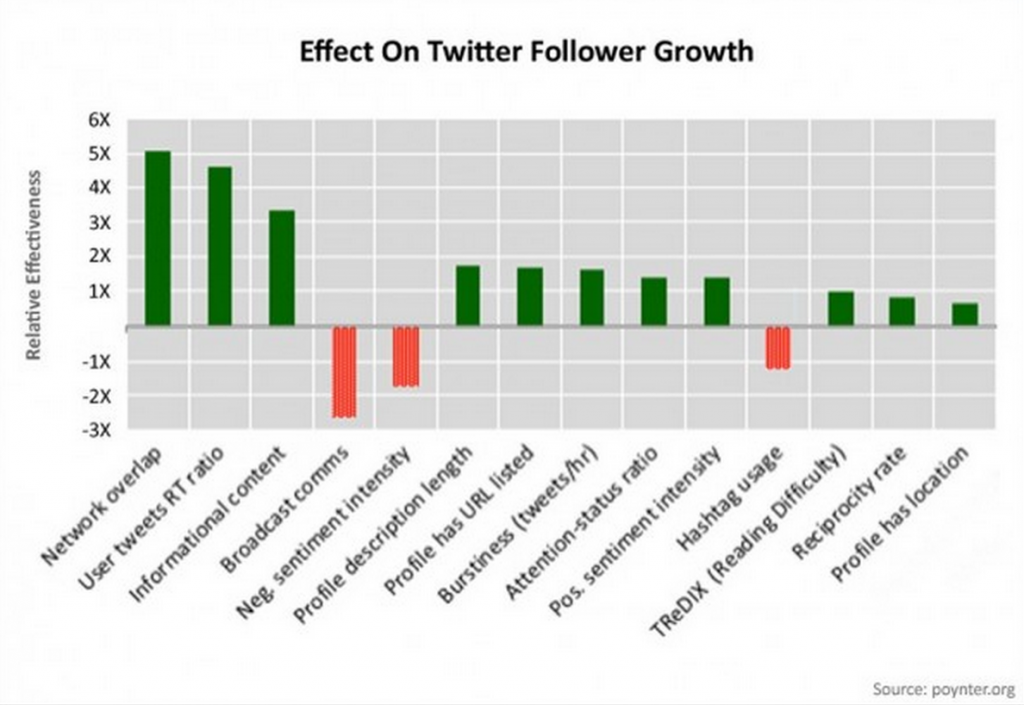The most comprehensive Twitter follower study we’ve ever come across recently came out of Georgia Tech. They tracked 500 users for over 15 months! collecting data on what lead to new followers. Now, most of these followers were not businesses or brands but the results surly apply.

We’re not going to go through them all, but here are a few of the most interesting results.
Network Overlap – This relates to whether the new follower also follows people in your network. If so, this has the greatest effect on whether they’ll click that follow button. Twitter knows this and it’s surely why there’s a box on every profile you view that says “Also followed by…” and lists your friends.
User Tweets RT Ratio – The more retweets you get, the more followers it will attract. This confirms what we already knew here at foundation, which is that our customers why buy retweets know what they’re doing =) Receiving lots of RT’s makes you 4.5X more likely to be followed when someone views your profile.
Broadcast Comments – We highlight this one because its the most likely to negatively impact your profile. Twitter is not a instant messaging system and shouldn’t be used like one. Don’t let your profile turn into a lengthy conversation with someone else. People will only follow you if they see information relevant to them.
Hashtag Usage – This we think is the most controversial topic stating that hashtag usage has a negative impact on follower count. Seems unlikely, but the study suggests that over usage will have a negative impact so don’t cram your tweets full of hashtags #OkNotOk




